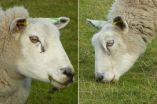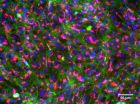Scientists move a step closer to understanding species distributions in the face of climate change
2015-08-08
(Press-News.org) Researchers shed light on why some plants thrive in different environments while others become extinct
Plants with C4 photosynthesis can thrive in a range of ecological conditions
Discovery could be key in helping improve vital food security
A team of international researchers, led by the University of Sheffield, has moved one step closer to discovering how physiological attributes allow some plants to thrive in a variety of conditions - something that could be the key to future food sustainability.
Climate change strongly impacts on biodiversity, putting some species at risk of extinction. However, some plant species adapt to their new conditions, and go on to thrive and invade areas where they have never grown before - something that largely remains a mystery to scientists.
Until now, little research has been done to understand the link between species' characters and ecological preferences.
Dr Marjorie Lundgren, a postdoctorate researcher from the University of Sheffield's Department of Animal and Plant Sciences, led an international team of scientists from France, South Africa, the United States, Uganda, and Tanzania, to look in detail at the species Alloteropsis semialata, a grass that prospers in a variety of habitats, from South African grasslands to the wooded savannahs of Tanzania.
Alloteropsis semialata is the only species known to have plants with and without C4 photosynthesis, which is a complex assemblage of leaf anatomical characters and enzymatic reactions that together increase productivity in warm and dry environments.
The syndrome is present in just three percent of all plant species yet accounts for one quarter of terrestrial primary production. This impressive productivity is due to C4 grasses, which dominate most open areas of the tropics and subtropics and especially savannahs.
Through genomic analyses, Dr Lundgren and her team found that Alloteropsis semialata originated in Central Africa during the Pliocene - the period of geologic time that extends from 5.3 to 2.6 million years ago.
Using novel approaches the scientists were able to understand the ecological changes that happened during the dispersal of this species, first in Africa and then in Asia and Australia. The team found that while the non-C4 plants remained confined to a small range of ecological conditions in Central Africa, the evolution of C4 photosynthesis immediately broadened the ecological conditions where the species could grow.
The pioneering research, published in Ecology Letters, discovered that C4 plants can disperse broadly across environmental and geographical space, while still surviving in the same habitats occupied by the non-C4 ancestors, showing that this physiological novelty increases the variety of habitats available, which allowed the rapid colonization of three distinct continents by this unique grass.
Dr Lundgren said: "In a world rapidly affected by climate changes and other anthropogenic alterations of natural systems, understanding how physiological attributes allow some plants to thrive in a variety of conditions might hold the key to the management of more resilient ecosystems. In addition, understanding what allows some plants to be productive in a variety of environments could help direct future crop improvement projects."
INFORMATION:
Notes to Editors
Citation: Photosynthetic innovation broadens the niche within a single species, published in Ecology Letters (doi:10.111/ele.12484). Authors: Marjorie R. Lundgren, Guillaume Besnard, Bradley S. Ripley, Caroline E.R. Lehmann, David S. Chatelet, Ralf G. Kynast, Mary Namaganda, Maria S. Vorontsova, Russell C. Hall, John Elia, Colin P. Osborne & Pascal-Antoine Christin
The University of Sheffield
With almost 26,000 of the brightest students from around 120 countries, learning alongside over 1,200 of the best academics from across the globe, the University of Sheffield is one of the world's leading universities.
A member of the UK's prestigious Russell Group of leading research-led institutions, Sheffield offers world-class teaching and research excellence across a wide range of disciplines.
Unified by the power of discovery and understanding, staff and students at the university are committed to finding new ways to transform the world we live in.
In 2014 it was voted number one university in the UK for Student Satisfaction by Times Higher Education and in the last decade has won four Queen's Anniversary Prizes in recognition of the outstanding contribution to the United Kingdom's intellectual, economic, cultural and social life.
Sheffield has five Nobel Prize winners among former staff and students and its alumni go on to hold positions of great responsibility and influence all over the world, making significant contributions in their chosen fields.
Global research partners and clients include Boeing, Rolls-Royce, Unilever, AstraZeneca, Glaxo SmithKline, Siemens and Airbus, as well as many UK and overseas government agencies and charitable foundations.
For further information, please visit http://www.sheffield.ac.uk
For further information please contact: Amy Pullan, Media Relations Officer, University of Sheffield, 0114 222 9859, a.l.pullan@sheffield.ac.uk
To read other news releases about the University of Sheffield, visit http://www.sheffield.ac.uk/news END
ELSE PRESS RELEASES FROM THIS DATE:
2015-08-07
DOWNERS GROVE, Ill, August 7, 2015 -The FDA recently approved two new endoscopic bariatric therapies (EBT) for the treatment of obesity. According to the American Society for Gastrointestinal Endoscopy (ASGE), this development provides important new, minimally invasive tools for combating the obesity epidemic and offers many patients an alternative to surgery.
The ReShape™ Integrated Dual Balloon System (ReShape™ Dual Balloon) was approved by the FDA on July 29. The ORBERA™ Intragastric Balloon was approved by the FDA on August 6. Many new and emerging ...
2015-08-07
Athens, Ga. - Recent research published in the journal Microsystems & Nanoengineering could eventually change the way people living with prosthetics and spinal cord injury lead their lives.
Instead of using neural prosthetic devices--which suffer from immune-system rejection and are believed to fail due to a material and mechanical mismatch--a multi-institutional team, including Lohitash Karumbaiah of the University of Georgia's Regenerative Bioscience Center, has developed a brain-friendly extracellular matrix environment of neuronal cells that contain very little foreign ...
2015-08-07
When the right gene is expressed in the right manner in the right population of stem cells, the developing mouse brain can exhibit primate-like features. In a paper publishing August 7th in the Open Access journal PLOS Biology, researchers at the Max Planck Institute of Molecular Cell Biology and Genetics (MPI-CBG) succeeded in mimicking the sustained expression of the transcription factor Pax6 as seen in the developing human brain, in mouse cortical progenitor cells. This altered the behavior of these cells to one that is akin to that of progenitors in the developing primate ...
2015-08-07
The common baker's yeast (Saccharomyces cerevisiae) is used to make bread, wine and beer, and is the laboratory workhorse for a substantial proportion of research into molecular and cell biology. It was also the first non-bacterial living thing to have its genome sequenced, back in 1996. However, when the sequence of that genome emerged it appeared that the scientists were seeing double - the organism seemed to have two very different versions of many of its genes. How could this have happened?
Researchers from the Centre for Genomic Regulation (CRG) Barcelona, Spain, ...
2015-08-07
Berkeley -- While the eyes may be a window into one's soul, new research led by scientists at the University of California, Berkeley, suggests that the pupils could also reveal whether one is a hunter or hunted.
An analysis of 214 species of land animals shows that a creature's ecological niche is a strong predictor of pupil shape. Species with pupils that are vertical slits are more likely to be ambush predators that are active both day and night. In contrast, those with horizontally elongated pupils are extremely likely to be plant-eating prey species with eyes on ...
2015-08-07
This news release is available in French and German.
Every year, more than a million fish are used for toxicity testing and scientific research in the EU alone, and around 400 fish are needed for a single fish early-life stage test. Such toxicity tests are often required by regulatory authorities for new chemical substances, as fish are particularly sensitive to contaminants in water at early developmental stages. However, the increasing use of experimental animals is ethically questionable. In addition, conventional tests are complex, expensive and take ...
2015-08-07
Coral Gables, FL (August 7, 2015)--Two new studies show that the tone of a candidate's voice can influence whether he or she wins office.
"Our analyses of both real-life elections and data from experiments show that candidates with lower-pitched voices are generally more successful at the polls," explains Casey Klofstad, associate professor of political science at the University of Miami College of Arts and Sciences, who is corresponding author on both studies.
The first study, published online in Political Psychology, shows that candidates who ran in the 2012 U.S. ...
2015-08-07
CRG researchers have proposed a new theory to explain the origin of whole genome duplication at the beginning of the yeast lineage. Yeasts are single-celled fungi that originated over 100 million years ago. The ability of these organisms to ferment carbohydrates is widely used for food and drink fermentation. Yeasts are also one of the most commonly used model organisms in research. For example, the yeast Saccharomyces cerevisiae, which is used to make bread, wine and beer, was the first eukaryotic organism to be sequenced (in 1996) and is a key model organism for studying ...
2015-08-07
Medulloblastoma, the most commonly occurring malignant brain tumor in children, can be classified into four subgroups--each with a different risk profile requiring subgroup-specific therapy. Currently, subgroup determination is done after surgical removal of the tumor. Investigators at Children's Hospital Los Angeles have now discovered that these subgroups can be determined non-invasively, using magnetic resonance spectroscopy (MRS). The paper will be published online by the journal Neuro-Oncology (Oxford Press) on August 7.
"By identification of the tumor subgroup ...
2015-08-07
TORONTO - Hearing loss in adults is under treated despite evidence that hearing aid technology can significantly lessen depression and anxiety and improve cognitive functioning, according to a presentation at the American Psychological Association's 123rd Annual Convention.
"Many hard of hearing people battle silently with their invisible hearing difficulties, straining to stay connected to the world around them, reluctant to seek help," said David Myers, PhD, a psychology professor and textbook writer at Hope College in Michigan who lives with hearing loss.
In a ...
LAST 30 PRESS RELEASES:
[Press-News.org] Scientists move a step closer to understanding species distributions in the face of climate change

